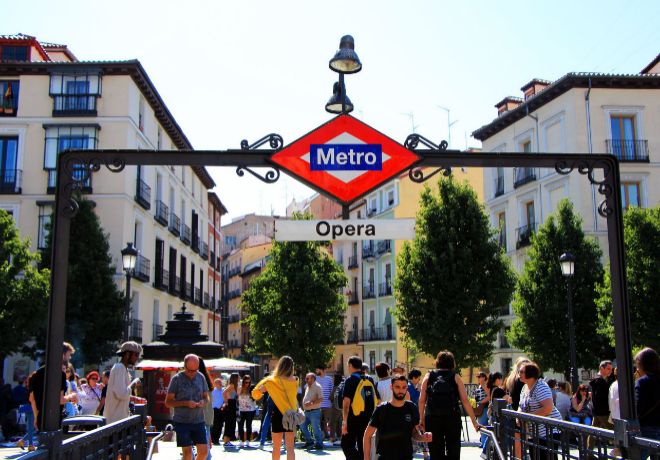Museums, galleries and even a lobby of the twentieth century ... We discover what is hidden under seven Madrid metro stations
The subsoil of Madrid is covered by hundreds of underground routes, new and old, with which they say that one could go from one end of the city to the other without going outside. There are texts that confirm that in the underground Madrid there are galleries and tunnels whose length has a total of 4,500 kilometers. . The bowels of the capital and everything under our feet surprises a lot and, in addition, we know very little about it. In this article we reveal you, season by station, what each of them hides.
Bank of Spain
During the Spanish Civil War, Plaza de Cibeles hosted an anti-aircraft bunker under its feet, taking advantage of the existing underground galleries. There the underground headquarters of the General Staff of the Republican Army was located during the contest, between 1936 and 1939. The access was made through different entrances of the Paseo del Prado, which are still visible today, but the access is cut.
Tirso de Molina
It was one of the first stations of the capital. It dates from 1920 and was built on the site where formerly the Convent of the Mercedarian Fathers was where he served as a priest in the 17th century Tirso de Molina. Inside you can see one of the oldest decorations in the entire metro network : the 1919 Madrid coat of arms made of bronze in which the bear and the arbutus appear.
peaceful
The Motor Ship, built between 1922 and 1923, is very close to this station. Why? Because there were located the motors, transformers and alternators that were used to generate energy with which to operate the old subway trains. In the same Pacific station you can visit the original 1923 lobby designed by Antonio Palacios.
Opera
Inside the subway station is the Caños del Peral Museum. It is the largest archaeological museum under the land of Madrid . In it you can see the remains of the source of the Caños del Peral, from the 16th and 17th centuries, with which they supplied water to the Royal Palace.
Carpetana
In the district of Carabanchel, on Line 6, there is a paleontological site of the Miocene of more than 14 million years ago. When it was found, during the restoration works, they decided to turn it into a space where the entire population could visit it and know what was inside.
Chamberí
This old station is called the ghost station or platform zero. It's called that because it was one of the first to open in the capital. It is part of Line 1 that opened in 1919, 100 years ago, but was closed to the public in 1966 due to the impossibility of expanding its platforms according to the needs of the time. Now you can visit in the form of a museum during the weekends, free of charge and by appointment.
Chamartín pinewood
Already outside the platforms, one of the oldest trams can be seen : the "Belgian". It was named for having been completely built in Belgium. This is a Charleroi V model that bore the number 477 and covered the route between Sol and Serrano. Today it can be restored at the Pinar de Chamartín station.
According to the criteria of
Know more
Comments
This news has no comments yet
Be the first in give your opinion
0 comments
